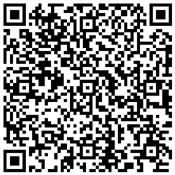QR Code (abbreviated from Quick Response Code) is the trademark for a type of matrix bar code (or two-dimensional bar code). A QR Code uses four standardized encoding modes (numeric, alphanumeric, byte / binary, and kanji) to efficiently store data; extensions may also be used. The QR Code system has become popular outside the automotive industry due to its fast readability and greater storage capacity compared to standard UPC bar codes. Applications include product tracking, item identification, time tracking, document management, general marketing, and more.
A QR Code consists of black modules (square dots) arranged in a square grid on a white background, which can be read by an imaging device and processed using Reed–Solomon error correction until the image can be appropriately interpreted. The required data are then extracted from patterns present in both horizontal and vertical components of the image.
Its initial purpose was to track vehicles and parts in the automotive industry during manufacture, and allowed high-speed component scanning. QR Codes now are used in a much broader context, including both commercial tracking applications and convenience-oriented applications aimed at mobile-phone users (termed mobile tagging). QR Codes may be used to display text to the user, to add a vCard contact to the user's device, to open a Uniform Resource Identifier (URI), or to compose an e-mail or text message. Users can generate and print their own QR Codes for others to scan and use. The technology has since become one of the most-used types of two-dimensional bar code.

QR Codes have become common in consumer advertising. Typically, a smartphone is used as a QR Code scanner, displaying the code and converting it to some useful form (such as a standard URL for a website, thereby obviating the need for a user to type it into a web browser). The QR Code has become a focus of advertising strategy, since it provides a way to access a brand's website more quickly than by manually entering a URL.